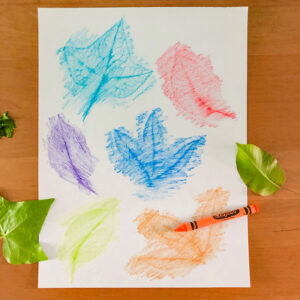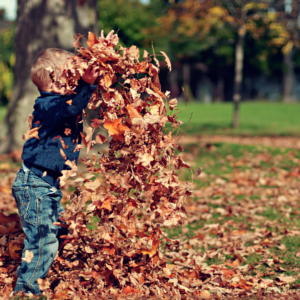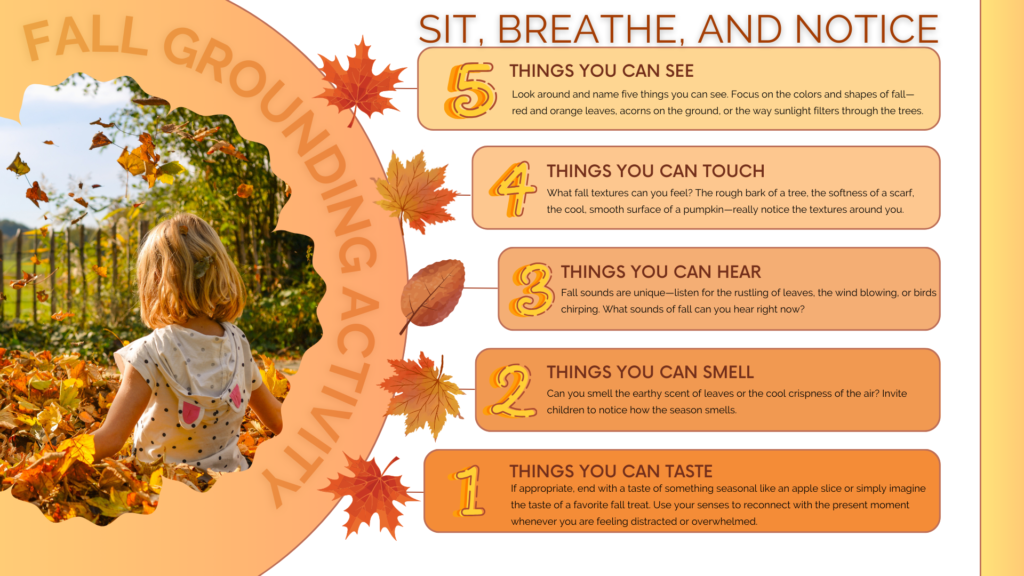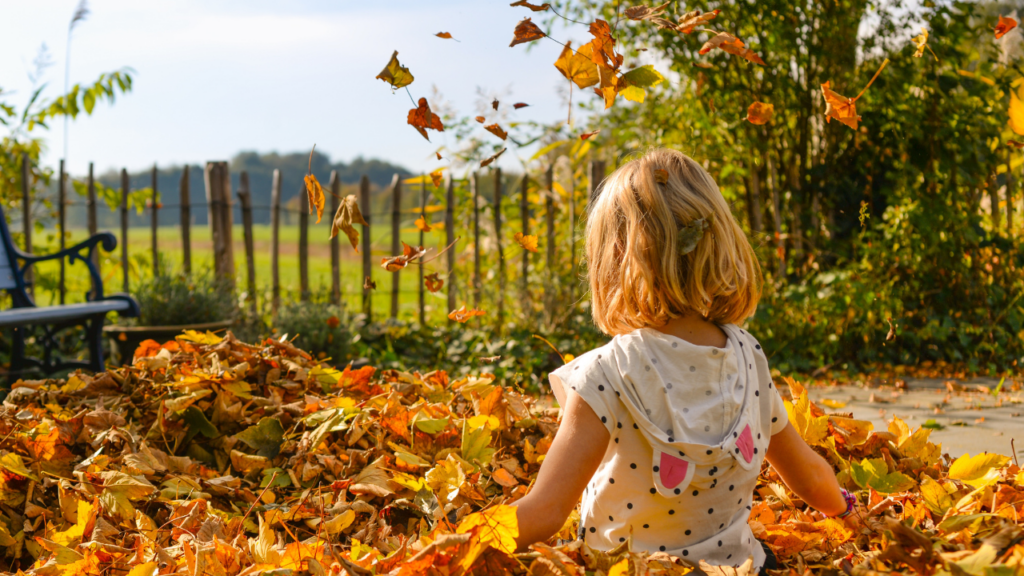As the fall season rolls in, it brings cooler air, vibrant colors, and new opportunities for children to connect with nature and their inner selves. Fall is the perfect time to slow down, notice the changes around us, and practice mindfulness. Whether you’re a parent, teacher, or counselor, these seasonal mindfulness activities can help kids ground themselves, manage emotions, and embrace the beauty of autumn.
Let’s explore some simple, engaging ways to bring a little more mind-fall-ness into your day!
1. Leaf Rubbing Mindfulness

Materials: Paper, crayons, and fallen leaves.
Leaf rubbing is a quiet and creative activity that encourages children to focus on their sense of touch and sight. Have children gather fallen leaves and place them under a piece of paper. Using the side of a crayon, gently rub over the leaves and watch as their intricate patterns appear on the page.
As they create their leaf rubbings, ask children to slow down and focus on the shapes and textures of each leaf. What do the lines look like? How does the crayon feel as it glides over the paper? By paying attention to these small details, they are practicing mindfulness while engaging their creativity.
2. Hot Cider Breathing
Materials: An actual cup of hot cider (or imagination!).
This cozy breathing exercise brings a warm, comforting element to mindfulness. If you have hot cider available, hand out small cups to the children. If not, they can use their imaginations!
- With a real cup of cider: Have the children hold their cup close, feeling the warmth in their hands. Encourage them to take a deep breath in through their nose, smelling the sweet and spicy scent of the cider. Then, have them slowly breathe out through their mouth, as if blowing on the cider to cool it down. Repeat a few times, focusing on the warmth, the scent, and the act of slow, mindful breathing.
- With imagination: If you don’t have actual cider, have the children pretend they’re holding a warm mug. Guide them to breathe in deeply, imagining the comforting smell of hot cider. As they breathe out, ask them to pretend they’re blowing on the cider to cool it.
This breathing technique helps children focus, relax, and connect with the present moment using their breath and senses—whether they have a real cup of cider or not!
3. Watching the Leaves Fall
Materials: A quiet spot with trees.
Find a peaceful spot outside where leaves are gently falling. Encourage children to sit quietly and observe the leaves as they drift down from the trees or swirl in the wind. Ask them to notice how each leaf moves—does it spin, float, or dart quickly to the ground?
This exercise helps children slow down and focus on the moment, appreciating the unpredictable and soothing movement of the leaves. It’s a great way to practice going with the flow—an important part of mindfulness.
4. Jumping in the Leaves

Materials: A pile of leaves.
Sometimes mindfulness can be full of movement! Have children help gather leaves into a pile, paying attention to the colors, textures, and sounds of the leaves as they work. Once the pile is ready, encourage them to pause for a moment, take a deep breath, and jump!
As they jump into the leaves, ask them to notice how their body feels—what sounds do the leaves make? What does the air feel like as they move? After a few jumps, let them take a moment to lay still in the leaves and notice the feeling of the cool, crisp air on their skin. This combination of play and stillness allows children to be fully present and connected to their surroundings.
5. Fall Grounding with 5-4-3-2-1
Materials: None.
This simple yet powerful grounding exercise helps children center themselves by using their senses to connect with the fall environment. Guide them through the following steps:
- 5 Things You Can See: Look around and name five things you can see. Focus on the colors and shapes of fall—red and orange leaves, acorns on the ground, or the way sunlight filters through the trees.
- 4 Things You Can Touch: What fall textures can you feel? The rough bark of a tree, the softness of a scarf, the cool, smooth surface of a pumpkin—encourage children to really notice the textures around them.
- 3 Things You Can Hear: Fall sounds are unique—listen for the rustling of leaves, the wind blowing, or birds chirping. What sounds of fall can you hear right now?
- 2 Things You Can Smell: Can you smell the earthy scent of leaves or the cool crispness of the air? Invite children to notice how the season smells.
- 1 Thing You Can Taste: If appropriate, end with a taste of something seasonal like an apple slice or simply imagine the taste of a favorite fall treat.
This grounding exercise helps children use all their senses to reconnect with the present moment, especially when they’re feeling distracted or overwhelmed.

Little Life Lessons 🧠 BIG Life Skills
Fall provides us with so many sensory experiences that can naturally bring mindfulness into our lives. Whether through quiet observation or active play, these “mind-fall-ness” activities encourage children to slow down, use their senses, and practice staying in the present moment. Mindfulness isn’t just about stillness—it can also be about connecting with the natural world in a playful and engaging way.
By incorporating these simple fall mindfulness activities into your routine, you can help children build a toolbox of calming strategies they can use throughout the year. So next time the wind blows or the leaves start to fall, take a moment to pause, breathe, and enjoy the present moment.
Watch a lesson about Mindfulness on YouTube
Our Favorite Books & Resources on Mindfulness

A wonderful introduction to mindfulness for preschool and elementary school kids. The message is beautiful and teaches children how to be mindful and how to slow down in the moment. When feeling upset, it guides them to take a deep breath and say, “I am peace” and/or “Everything is alright.” This book and a few others from this author’s series are in our calming corner and the children gravitate to them.
Breathe Like a Bear: 30 Mindful Moments for Kids to Feel Calm and Focused Anytime, Anywhere
This is one of my all time favorite mindfulness resources. It is filled with beautifully illustrated mindfulness exercises to teach kids techniques for managing their bodies, breath, and emotions. With 30 exercises, you could have a new breathing exercise every week of the school year! Author, Kira Willey, has a YouTube channel with mindfulness songs that you will want to check out as well: https://www.youtube.com/@firefliesyoga/videos
This is a great book that teaches how to use a guided breathing pattern to calm worries, sadness, anger, and to enjoy happiness. It speaks directly to the reader and prompts them to blow their magic breath onto the book’s pages, while trying to visualize the replacement of unpleasant emotions and thoughts.
The simplicity of this book makes it easy for children to learn how to apply mindfulness in their daily lives for the multitude of emotions they experience. You can read the whole book through, or just pick a relevant emotion. I like the tips for adults at the end of the book to further help bring mindfulness to children. Highly recommend!
Relax Kids: Aladdin’s Magic Carpet and other Fairytale Meditations for Children
I am surprised that more elementary school counselors and teachers don’t know about this little treasure! Traditional fairy tales are used as a gentle and fun way of introducing children to the world of mindfulness and relaxation. Guided imagery and visualization will have children flying on Aladdin’s magic carpet, climbing Jack’s beanstalk, swimming in the ocean with the Little Mermaid, or listening to the sounds of the forest with Snow White. The stories are designed to encourage a child’s imagination while leading them into a positive and peaceful emotional state. A great little resources for the classroom or counseling office.
Ishi: Simple Tips from a Solid Friend
“Happiness is a choice. Be happy” is the essential message of this picture book.The author uses adorable photographs of a pet rock named Ishi to show kids (and adults) how to find the positive parts to life when they are feeling down, different, or lonely. She validates their feelings and then offers advice on how to find their inner peace and happiness.
Roll the dice and choose a pose to hold for a determined number of breaths. This simple movement game promotes stretching, flexibility, and focus. Perfect for brain breaks or mindful moments. Includes 36 poses to try!
Mindful Kids: 50 Mindfulness Activities for Kindness, Focus, and Calm
As a school counselor, I often use these with elementary students in the classroom, in small groups, or with individuals. These mindfulness exercises are short enough to keep their attention, phrased in ways that are kid-friendly, and teach a very important skill. There are also SO MANY, so I pick different ones to do for different kids based on their individual issues and how they are feeling. Once students are familiar with the activities, the cards could be added to a calm corner for students to access when they need a mindful moment.

